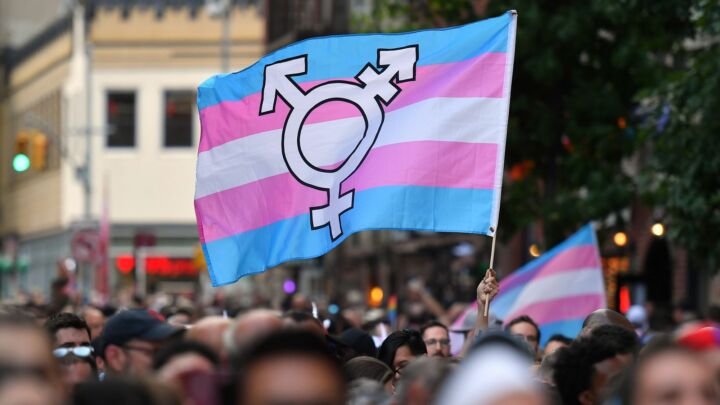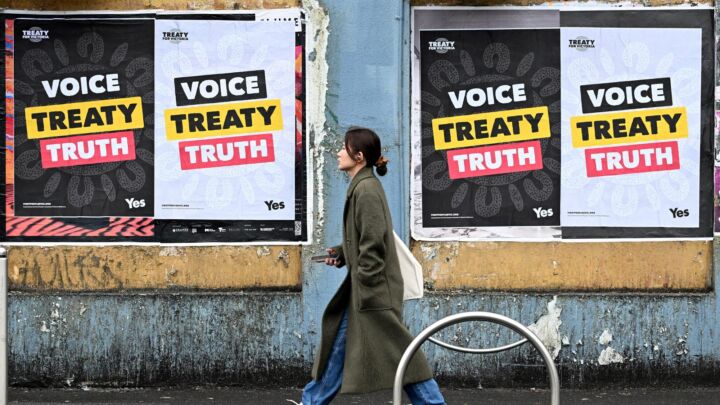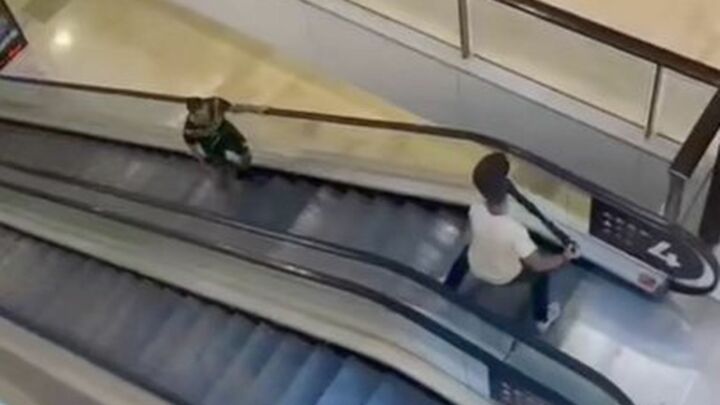Whose Britain is it anyway?
How We Are, a sweeping exhibition at the Tate that covers 170 years of photography, provides a snapshot of today's British identity crisis.

The TATE Britain exhibition How We Are: Photographing Britain reminds you of the power of photography as a tool for observation, documentation and archiving – as an art form through which enquiries into human experience are made, and as a dynamic medium which has evolved in form and content as new techniques and technologies have developed. Yet the exhibition is not primarily about the evolution of British photography since the invention of the medium in the 1830s; rather it is a ‘photographic portrait’ of Britain.
So why not call it ‘Who We Are’? Maybe because, today, we’re far too confused about who the British are and what Britishness means; certainly the curators seem to have lacked the confidence to tell any overarching ‘story of Britain’. At the same time, though, it isn’t only up to curators or photographers to determine who we are, so the collection of 500 photographs and books, magazines, daguerreotypes and slides in How We Are effectively throws up the question for our reflection.
The aim of the exhibition is to survey British life through the lenses of 100 photographers. And the only clear order imposed in the gallery space is a broadly chronological one. The exhibition is eclectic – and at times confusing. Making your way through over a century of British life, you get the feeling that there is nothing that ties it all together. There are broad themes – celebrity portraiture, national heroes, heritage and a longing for the past, Britain’s relationship with the land and wildlife, British customs and traditions, the idea of the home and so on – but, being essentially a postmodern exhibition, no one subject (person or topic) is privileged over another. It simply presents an array of images of different people, doing different things at different times. Britishness is everything and anything, it seems to say.
Divided into six sections, How We Are displays well-known photographers, such as Julia Margaret Cameron, Roger Fenton, Madame Yevonde, Cecil Beaton, Bill Brandt, David Bailey, Martin Parr, Elaine Constantine and Tom Hunter, alongside less familiar ones. And well-known subjects – including Brunel, Queen Victoria, Mick Jagger and Sean Connery – appear next to ‘ordinary’ or unknown people, like the street waifs at Barnardo’s home for working and destitute lads; fishing communities of the late nineteenth century; the immigrant clientele in the Belle Vue Studio in Bradford in the early 1950s; beauty contestants in Southport in 1967; and clubbers in 1980s London.
Not surprisingly, contemporary concerns temper the exhibition. There is a celebration of the ordinary, of identity politics and ‘participation’. Not only is this the first major photography exhibition at TATE Britain – it is also the first time the public has been invited to contribute, through the online photo-sharing phenomenon Flickr, to a major show at the gallery. Though unnecessary and crass, this free-for-all initiative is quite appropriate in How We Are, because it does capture something about ‘how we are’ today.
The brochure claims that the exhibition ‘demonstrates the cyclical nature of British photography: how the innovators of the digital age are not so different from the inventors of the nineteenth century’. Yet the only similarity seems to be that both yesterday’s photographers and today’s experimented with the new technology that was at hand, and because of their fascination with what the new technology could do, both tended to photograph rather mundane subjects. In other words, the early pioneers of photography were so fascinated with their new technology that they took photos of anything just to see how and why it worked; and so fascinated are we by photo-sharing today that we tend to take pics of our cats or our breakfasts or whatever just so we can share our ‘everyday experiences’ with thousands of virtual friends and surfers.
Making the exhibition artificially go ‘full circle’ from the invention of photography to the new digital age feels forced, and in some ways it undermines the fascinating trajectory the exhibition sets out for the visitor, which reveals shifts not only in photographic techniques and subject matters, but also in British customs, political events, immigration patterns, and artistic and family lives. Despite its cyclical posture, the exhibition in fact stakes out how much has changed in Britain – and in the photographic medium.
In the opening part of the exhibition, ‘First Moves’, WHF Talbot’s pictures of three men with a ladder and of a broom by an open door may seem dull to the modern viewer – but in those early days it must have been fascinating just to see everyday scenes and objects reproduced on photographic paper. With time, photography became more sophisticated. In their eagerness to claim it as a respectable art form, early photographers often imitated the composition of paintings. Later, in the mid-nineteenth century, American-born Alvin Langdon Coburn was the first to produce abstract compositions.
As the exhibition shows, by the turn of the twentieth century documentary photography became increasingly important – and cameras were more widely available. So much so that Bill Brandt – having documented all levels of British society, from London’s West End to its suburbs and slums, from upper-class homes to coal miners in the north during the industrial depression – finally lost interest in reportage. He said: ‘Towards the end of the war, my style changed completely. I have often been asked why this happened. I think I gradually lost my enthusiasm for reportage. Documentary photography had become fashionable. Everybody was doing it. Besides, my main theme of the past few years had disappeared; England was no longer a country of marked social contrast.’
The fascination with celebrities in postwar Britain is reflected in the photographs from the archives of the Daily Herald (which later became the Sun). There are shots of Audrey Hepburn, Tommy Cooper, Ronnie Corbett. Yet next to these images are pictures by Shirley Baker, which show residents in Hulme, Salford, being displaced in a ‘slum clearance programme’. Such juxtapositions appear throughout the exhibition, so that ‘Britain emerges’, as the brochure states, ‘as a contradictory and remarkable place’.
Many of the photographers in the section ‘The Urge to Document’, covering 1970 to 1990, dealt with Thatcherism and consumerism. Martin Parr’s collection ‘The cost of living’ satirised the middle classes. The period 1990 to 2007, in the section ‘Reflections on a Strange Country’, continues this theme. One of Chris Harrison’s photographs of World War One memorials in their contemporary settings shows a Tesco store in the background – a fairly predictable and quite bland comment on the further intrusion of consumerism into the British fabric.
How We Are comes across as a humble, uncertain portrayal of Britain. There is no ostentatious national pride on display; the soldiers shown are either wounded or angst-ridden; the black and Asian communities are proud and vibrant. Of course, collecting together 500 images from the past 170 years of British photography will involve a lot of selectivity and interpretation. Yet the exhibition seems only to want to show us how we have been, leaving the rest to our interpretation.
This is both its weakness and its strength. It is a weakness because it doesn’t tell any ‘story of Britain’, seeming to shy away from making any firm comment about what Britishness is and how it has been shaped. And it is a strength because it lets the viewer enjoy what photography does best: connect us to times and places we may not have seen before, and give us a sense of novelty in rediscovering the every day. The photographs of vegetables found in the Bermondsey market in south London captures how photography can re-display everyday objects and events that we normally pass by without reflecting on, and show us details that we otherwise would miss. Who would have thought celery can be beautiful?
‘Since the invention of the medium in the 1830s, photographers working in Britain have celebrated, and grappled with, a constantly shifting notion of British identity’, says the exhibition brochure. To say that photographers – whether British or not – grapple with how we are is at the same time a vague and obvious assessment of what photography is about. By its very nature, photography freezes moments in time and, as such, it is about documenting and saving the present. The difficulty we have today, it seems, is in weaving those frozen moments into any bigger idea of where Britain comes from, and where it might be heading next.
Nathalie Rothschild is commissioning editor at spiked.
How We Are: Photographing Britain runs at Tate Britain from 22 May to 2 September 2007. For more details visit the Tate Britain website.
Nathalie Rothschild reviewed In the Face of History, an exhibition of twentieth-century photography, and a film about Diane Arbus, the photographer of ‘freaks’. Josie Appleton believed Susan Sontag’s On Photography offers a unique insight into Iraq torture snaps. Nancy McDermott observed that photographer Annie Leibovitz always reveals her subjects’ humanity. Or read more at: spiked issue Arts and entertainment.
To enquire about republishing spiked’s content, a right to reply or to request a correction, please contact the managing editor, Viv Regan.









Comments
Want to join the conversation?
Only spiked supporters and patrons, who donate regularly to us, can comment on our articles.